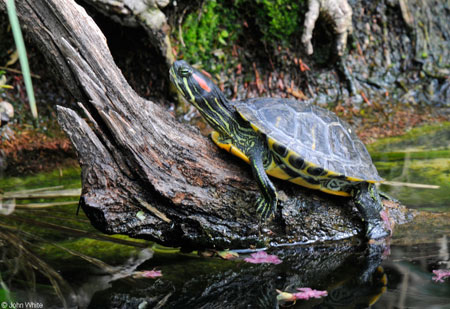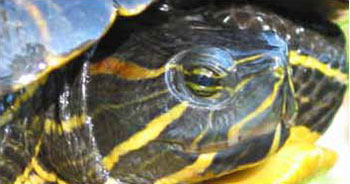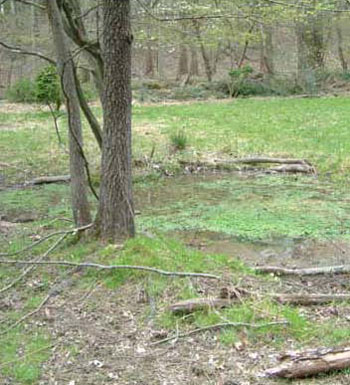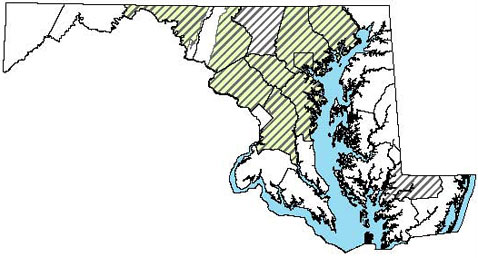Field Guide to Maryland's Turtles (Order Testudines)
Main_Content
Red-eared Slider (Trachemys scripta elegans) | | Common Name:
|

Photo of Red-eared Slider courtesy of John White |
Size: 8 - 13 inches. Record: 15 inches |
Appearance:
-
This turtle gets its name from the broad red stripe
behind its eye. The stripe may also grade to yellow.
-
Yellow stripes are found along its neck and throat.
-
The carapace (top shell) is oval, slightly domed (not
flattened) and may have a weak keel.
-
The carapace is usually a dark green to brown color with
variable markings.
-
The rear marginal scutes are notched.
-
The plastron (bottom shell) is yellowish, often with
dark markings in the center of each scute, or scale.
-
Males are often smaller than females but will have
longer claws.

Photo of Red-eared Slider courtesy of Scott A. Smith
|
Habitats:
Prefers slow warm waters of ponds, lakes, marshes, streams with muddy
bottoms, abundant aquatic vegetation and basking rocks and logs.
|
How to Find:From March through September, use binoculars to search basking sites of ponds and lakes.
They may also be seen swimming at the surface of water bodies. They get their name from the rapid way they slide off basking sites.

Photo of Habitat for Red-eared Slider courtesy of Rebecca Chalmers
|
Distribution in Maryland:This species is not native to Maryland. It is naturally found in the southern United States and was introduced by people releasing pet turtles into the wild. Currently, they can be found in the north and central parts of the state, as far south as Prince George's County.

|
|
